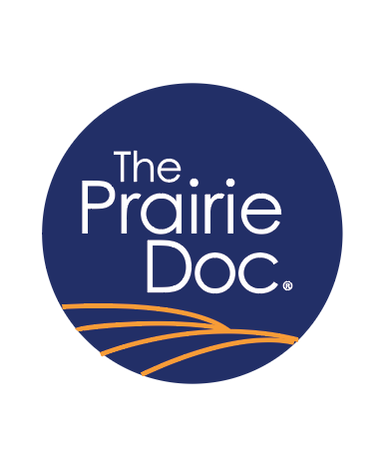That’s LoveBy Jill Kruse, DO
When my mom called me and said that my dad found four N95 masks in the garage and she wanted to send them all to me since I’m a doctor – That’s love. When I reassured her that we had enough in clinic for now and that she should keep them, or at least keep two for her and dad – That’s love. When I received the box in the mail, all four masks were there, lovingly wrapped in tissue paper with a note of encouragement – That’s love. When I come home from work my children run to the top of the stairs yelling out, “Mommy’s home” – That’s love. When I stop them from coming down to the landing until I can shower and change in the downstairs bathroom because I am scared that I might bring the virus home and I want to do everything I can to protect them – That’s love. When a patient sends a message to local health care workers that they are thinking of us and praying that we stay well – That’s love. When essential workers in any profession, show up to support their families and co-workers every day – That’s love. When the local theater department makes masks for the hospital and uses it as a final project for students – That’s love. When you order a take-out meal from a local restaurant or buy a gift card from a local small business – That’s love. When you turn off the news and call a friend instead so neither of you are so lonely – That’s love. When you practice social distancing, not because you are afraid, but because you do not want to add to anyone else’s risk – That’s love. When teachers completely change the way they teach, with only a few days to prepare, and their eyes light up with happiness when they see their students on a Zoom meeting – That’s love. When you are frustrated, angry, scared, or just don’t know what else to do, look for the love. It is all around you. Sometimes we do not see it because we are so overwhelmed with all these other waves of emotions that try to drown it out, but it is there. It is always there. That’s love, waiting for you to find it. Jill Kruse, DO, is part of The Prairie Doc® team of physicians and currently practices family medicine in Brookings, South Dakota. For free and easy access to the entire Prairie Doc® library, visit www.prairiedoc.org and follow Prairie Doc® on Facebook featuring On Call with the Prairie Doc® a medical Q&A show streaming on Facebook and broadcast on SDPB most Thursdays at 7 p.m. central. Trust the Scientific ProcessBy Kelly Evans-Hullinger, M.D.
It is the year 2020, and we find ourselves in the midst of a rapidly changing, worldwide pandemic of a novel Coronavirus. This virus and public knowledge of it has spread and changed with greater speed than our scientific method can accommodate. Science, and the progression of medical knowledge, is by nature and necessity slow and methodical. This pandemic is neither. But we ought not abandon our deliberate striving for truth; not now, not because it feels too slow. The gold standard in medical science, the randomized controlled trial (or RCT), is a relatively new development in the history of medicine. The British epidemiologist Sir Bradford Hill is credited with designing and publishing the first RCT in medical science, a study of streptomycin in treating tuberculosis, in 1948. Sure, even randomized controlled trials are never perfect, and they require large numbers of patients, time, and investment. However, their design does seek to remove variables that are sure to taint all other trial designs. They are the best we have, especially when it comes to evaluating a therapeutic intervention. Much speculation has arisen, both in the medical community and the media, about possible drug therapies for this disease: hydroxychloroquine, azithromycin, remdesivir, convalescent plasma, and others. Why have so many physicians and scientists been less-than-fully-enthusiastic about these interventions? It is because we do not have sufficient data yet. There has not been time for any quality randomized controlled trials. Still, if these things might help, why not just throw them at patients with severe cases of COVID-19? What do we have to lose? The truth is, the history of medicine is flush with examples of therapies that we thought would be helpful – studies in the lab were favorable, we had promising initial observational data, and expert opinion was in favor of it – but, when put to the test, they were not. In many of these cases the interventions turned out not only to be not helpful, but harmful, when they were tested in a randomized controlled trial. We must demand a high threshold of proof before accepting therapy as effective. History has taught us that mistakes are made if we do not. We want solid evidence that an intervention helps more than it hurts before recommending we give it to everyone with this disease. Yes, even if it seems slow. One thing is for certain: our collective scientific energy will be best spent investing in developing a vaccine for this highly contagious virus. Fortunately, there are very smart people all over the world working around the clock in this endeavor. A vaccine: now that would be a game-changer. In the meantime, our best defense against this pandemic continues to be social distancing – so stay home and minimize contact with others. The more we flatten the curve now, the more people will benefit from the hard work of science in the future. Kelly Evans-Hullinger, MD is part of The Prairie Doc® team of physicians and currently practices internal medicine in Brookings, South Dakota. For free and easy access to the entire Prairie Doc® library, visit www.prairiedoc.org and follow Prairie Doc® on Facebook featuring On Call with the Prairie Doc® a medical Q&A show streaming on Facebook and broadcast on SDPB most Thursdays at 7 p.m. central. The Message Is Staring You in the FaceBy Richard P. Holm, MD
In a recent national survey, 26.9 million American adults age 18 and older reported experiencing vision loss. Of course, vision loss means blindness or the inability to see at all, but the definition also includes those having trouble seeing, even when wearing glasses or contact lenses. While not everything is preventable or reversible, early detection and intervention are among our most effective tools to prevent vision loss. Mrs. E who lived well into her 90s, would come into my office, never complaining about her eyesight. However, the diagnosis of age-related macular degeneration (AMD) was obvious to me because, when she and I had a face to face conversation, she would look a foot to the left of my nose. The AMD had destroyed her central vision and she used her peripheral vision to see. AMD is the most common cause of blindness in the elderly. Risk factors include a family history of AMD, aging, smoking, obesity and hypertension. We can reduce our risk if we stop smoking, eat less, exercise and visit our eye doctor on a regular basis. Almost the opposite of AMD is glaucoma, where the peripheral vision is lost, and the central vision is spared. This gradual and painless loss of vision is due to injury of the optic nerve and is commonly the result of increased pressure of the fluid within the eyeball. When glaucoma progresses, even the central vision can be lost but, if diagnosed early, treatment can help. Diabetic retinopathy and cataracts are more common than AMD or glaucoma. Diabetes causes new tiny, and unfortunately very fragile, blood vessels to develop on the retina, and, when these delicate blood vessels bleed, they cause swelling, scarring, and progressive spotty vision loss. Cataracts, the leading cause of blindness in the world, cause the clouding of the lens of the eye. For most of these eye conditions, there are methods to diagnose, treat and prevent the blinding consequences, yet many people skip regular eye exams. The message is staring you in the face, or perhaps a foot to the left of your nose…get your eyes checked every year. Due to the coronavirus pandemic, most non-urgent eye appointments are being deferred to the latter half of the year. Contact your eye doctor to discuss the best option for you. Richard P. Holm, MD passed away in March 2020 after a battle with pancreatic cancer. He was founder of The Prairie Doc® and author of “Life’s Final Season, A Guide for Aging and Dying with Grace” available on Amazon. Dr. Holm’s legacy lives on through his Prairie Doc® organization. For free and easy access to the entire Prairie Doc® library, visit www.prairiedoc.org and follow Prairie Doc® on Facebook, featuring On Call with the Prairie Doc® a medical Q&A show streaming on Facebook and broadcast on SDPB most Thursdays at 7 p.m. central. Aging is a Mixed PictureBy Richard P. Holm, MD
During my lifelong practice of geriatrics, I observed many people reaching the end of their lives. Truth is, what I’ve seen is a mixed picture. The two patient stories I describe here are really a blend of hundreds of experiences. Ms. A is in her late 80s, walks two miles every day, mostly outside but inside a wellness center when sidewalks are icy. She eats a balanced light diet and is connected to many friends. Ms. A is spiritually connected, and life has been and continues to be meaningful to her. Ms. B is also in her late 80s, has never been much for exercise and now is unable to walk without the help of her walker. She lives in an assisted living center and has made some friends there but remains rather critical of them. Whenever her kids visit, she asks them to take her home. Ms. B had some tough times and some happy times during her life, but now, she remains rather bitter. At age 82, comedian Rodney Dangerfield, who had studied the relationship between sexuality and longevity said, “I’m at the age where food has taken the place of sex in my life. In fact, I’ve just had a mirror put over my kitchen table.” Reading that made me laugh out loud, but I see Dangerfield’s comment as both funny and sad. Indeed, this thing called growing old is a mixed picture. Should we celebrate it or fear it? Does it give wisdom and meaning or just aches and pains? I suggest we embrace both sides of the picture. Let’s choose to live as long and as well as our luck and genetics allows. We would all do better with regular exercise, eating less, connecting with both the earthly and the spiritual. Let’s also choose to kindly accept the fact that someday we will reach the end of our lives. We can take healthy steps by creating an advanced directive, by understanding the kinds and causes of dementia and facing the inevitable death of the ones we love. Embracing this mixed picture helps us in accepting aging processes we cannot change, avoiding suffering and savoring things that matter. Bottom line lessons from Ms. A and B: Like any piece of art, we can choose how we view the picture of our own aging. Those who live with misery, anger and vengefulness will likely die that way. Those who glean meaning and joy from observation, giving to others and opening their hearts to the spiritual will find aging a grand masterpiece. Richard P. Holm, MD passed away in March 2020 after a battle with pancreatic cancer. He was founder of The Prairie Doc® and author of “Life’s Final Season, A Guide for Aging and Dying with Grace” available on Amazon. Dr. Holm’s legacy lives on through his Prairie Doc® organization. For free and easy access to the entire Prairie Doc® library, visit www.prairiedoc.org and follow Prairie Doc® on Facebook, featuring On Call with the Prairie Doc® a medical Q&A show streaming on Facebook and broadcast on SDPB most Thursdays at 7 p.m. central. |
Archives
July 2024
Categories |
 RSS Feed
RSS Feed


